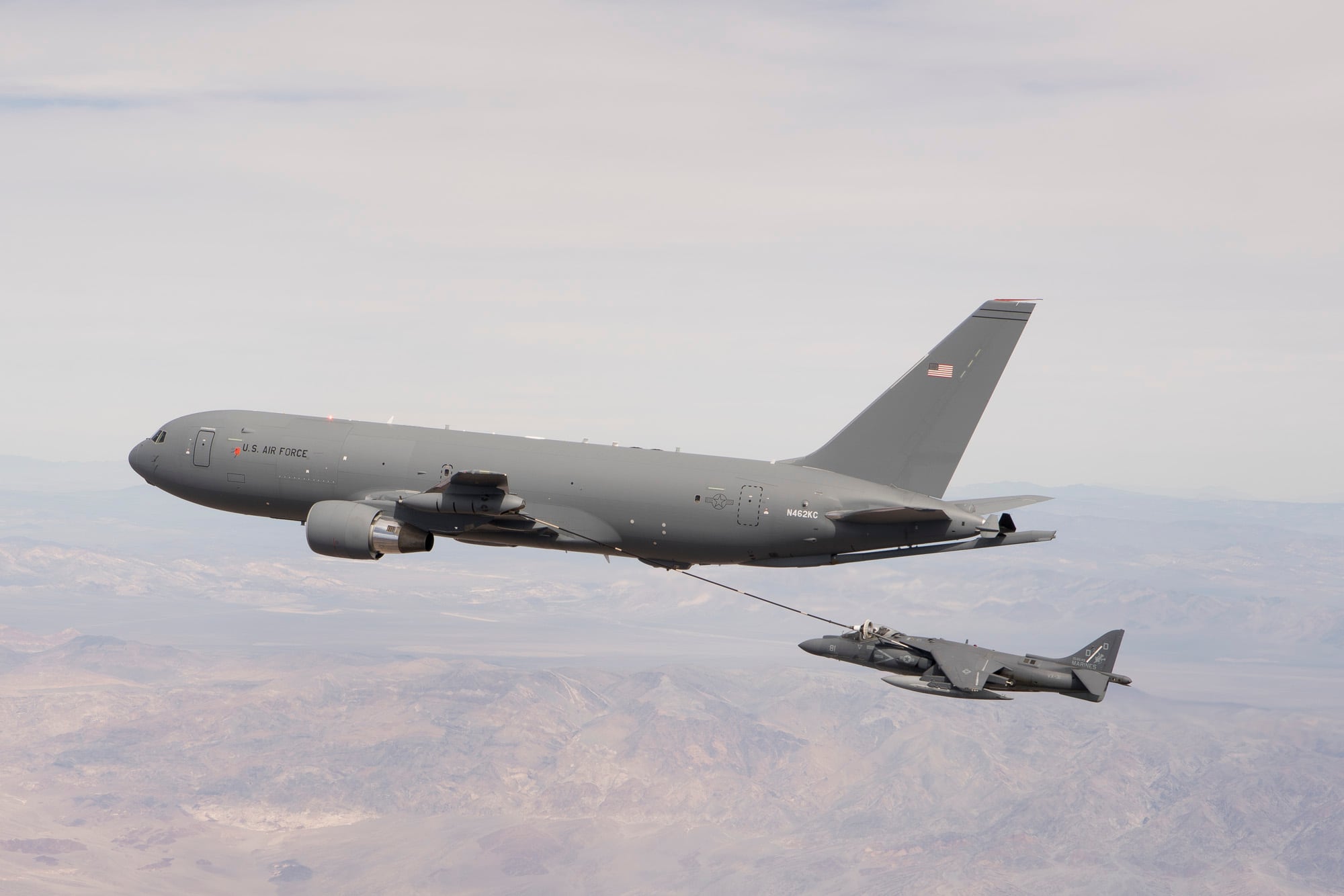The head of Air Mobility Command said the KC-46 Pegasus is about 94 percent complete with tests needed for the aircraft’s second — and final — FAA certification.
Gen. Carlton Everhart visited Boeing in Washington state to get a hands-on look at the Air Force’s new refueling tanker.
“If everything stays on track and the weather holds, I think [Boeing and the Federal Aviation Administration] can probably get everything done in the next 60 to 70 days, hopefully less,” Everhart told Air Force Times on Wednesday after flying on the KC-46 for the first time.
The four-star general, who has more than 4,500 flight hours, said he performed the takeoff and approached the landing under the guidance of test pilots.
“We get a lot of PowerPoint-deep presentations,” he said. “Every now and then, you’ve got to get out and smell the jet, look at the jet and understand what the test points are.”
In December, the FAA certified the 767-2C, which is the modified 767 commercial plane that forms the basis of the KC-46.
This Amended Type Certificate verifies that the fundamental design of the tanker is safe, and it’s one of two FAA certifications required for the tanker program. The Supplemental Type Certificate focuses on the military-specific equipment that’s installed on the 767-2C aircraft to make it a tanker.
In addition to the two FAA certifications, the KC-46 requires an Air Force-issued Military Type Certification that validates the airworthiness and safety of the military systems and equipment installed on the new tanker, AMC officials said.
Everhart estimates it will take about a month or so for Boeing to complete the testing required for the Supplemental Type Certificate. Then Boeing will turn the data over to the FAA, which should take about another month to give it the stamp of approval.

One purpose of Everhart’s visit focused on assessing the flying quality and performance of the tanker, which Everhart praised.
“I have flown airplanes that were older than I was when I came into military service,” said Everhart, whose flying experience includes the C-17 and C-130 transport planes.
The modernized airframe and responsiveness of the KC-46 impressed Everhart, who said it has game-changing technology, including more automation so pilots can focus on the mission. The tanker also has the potential to add new technology as it continues to develop, he said.
Everhart also wanted to check out the Remote Visual System, which allows the boom operator to sit near the front of the KC-46 and remotely operate the boom during mid-air refueling. The system was linked to one of the deficiencies discovered during testing.
This deficiency involved reports of the tanker’s boom scraping the receiving aircraft during mid-air refueling. The boom, which extends into a receptacle on the receiving aircraft, in some cases was making contact outside of the receptacle and scratching the other plane.
This could damage the receiving aircraft, especially if the KC-46 is refueling stealth jets like the F-22 and F-35 that are covered in a special coating.
During testing, some of the boom contacts made outside of the receptacle were not detected by the boom operators through the visual system, AMC spokesman Col. Chris Karns said.
Boeing’s software engineers are working to enhance the Remote Visual System so boom operators can prevent these contacts, Everhart said, adding that sometimes the camera view is washed out because of the sun.
“[The engineers] are changing the contrast of how the visuals work with the camera to facilitate a view of the boom and receptacle,” Everhart said.
Part of it could also be an issue of making sure boom operators are properly trained on the Remote Visual System.
“Because you’re not lying back there [where you can actually see the boom],” Everhart said. “You’re looking through a camera.”
Another of the deficiencies involved an “uncommanded boom extension,” where the boom has unexpectedly extended after refueling is stopped.
A software fix is expected to resolve this deficiency by the spring, Karns said.
The third open deficiency deals with ensuring that the high-frequency radio remains off during refueling, and options are being developed to address this, he said.
“A lot of energy is being put towards this program by Boeing and the Air Force to deliver the aircraft this year,” Karns said.
Boeing had originally planned on delivering the first KC-46 to the Air Force by the end of 2017, but now the plan is to deliver the first tanker by late spring.
RELATED

The Air Force plans to buy 179 of the aircraft, and Boeing is contractually obligated to deliver the first 18 certified tankers by October.
McConnell Air Force Base in Kansas and Altus Air Force Base in Oklahoma will be the first to receive the KC-46, which will replace the KC-135 Stratotankers.
The KC-135 fleet is on average 55 years old, Karns said, adding that maintaining America’s military advantage over adversaries requires modern tankers.
In November, Russia’s United Aircraft Corporation rolled out an upgraded tanker designed to replace its legacy aircraft.
“The new Russian tanker will have increased fuel capacity,” Karns said. “Russia and China recognize the strategic benefits of extending their reach and are prioritizing fielding enhanced aerial tanker capability.”
After Everhart’s visit to Boeing, he said he believes they’re still on track to deliver the first tanker by this spring.
He’s asked Maj. Gen. John Wood, Air Mobility Command’s director of strategic plans, requirements and programs, to go back out to Boeing at some point.
“I need the more people I can to see the airplane,” Everhart said. “It will bring tremendous capability to our joint war fighter.”
Charlsy is a Reporter and Engagement Manager for Military Times. Email her at cpanzino@militarytimes.com.








